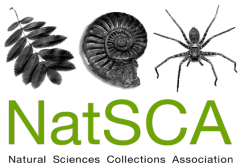Mineral-specific issues in 3D scanning and printing for digital collections, outreach and display
Three-dimensional (3D) scanning and 3D printing of natural history specimens presents interesting opportunities for informal and formal science education, as well as specimen preservation and display. Museum staff in several museums have begun scanning and making specimens available online. However, very few mineral specimens are available as scanned 3D objects, because minerals present unique challenges in scanning. Specifically, their variable surface reflection properties (“luster”) and surface complexities make them complicated specimens to reproduce. This paper examines the variables involved in 3D scanning and 3D printing mineral specimens, lays out criteria for ideal candidates, and presents workarounds to common problems. In general, ideal mineral candidates for 3D scanning and 3D printing are opaque, with no overlapping components that create obscured cavities, have a distinctive form or habit, and have light colour and dull or earthy luster. Non-ideal candidates can still successfully scan and print, though workarounds are often required.
